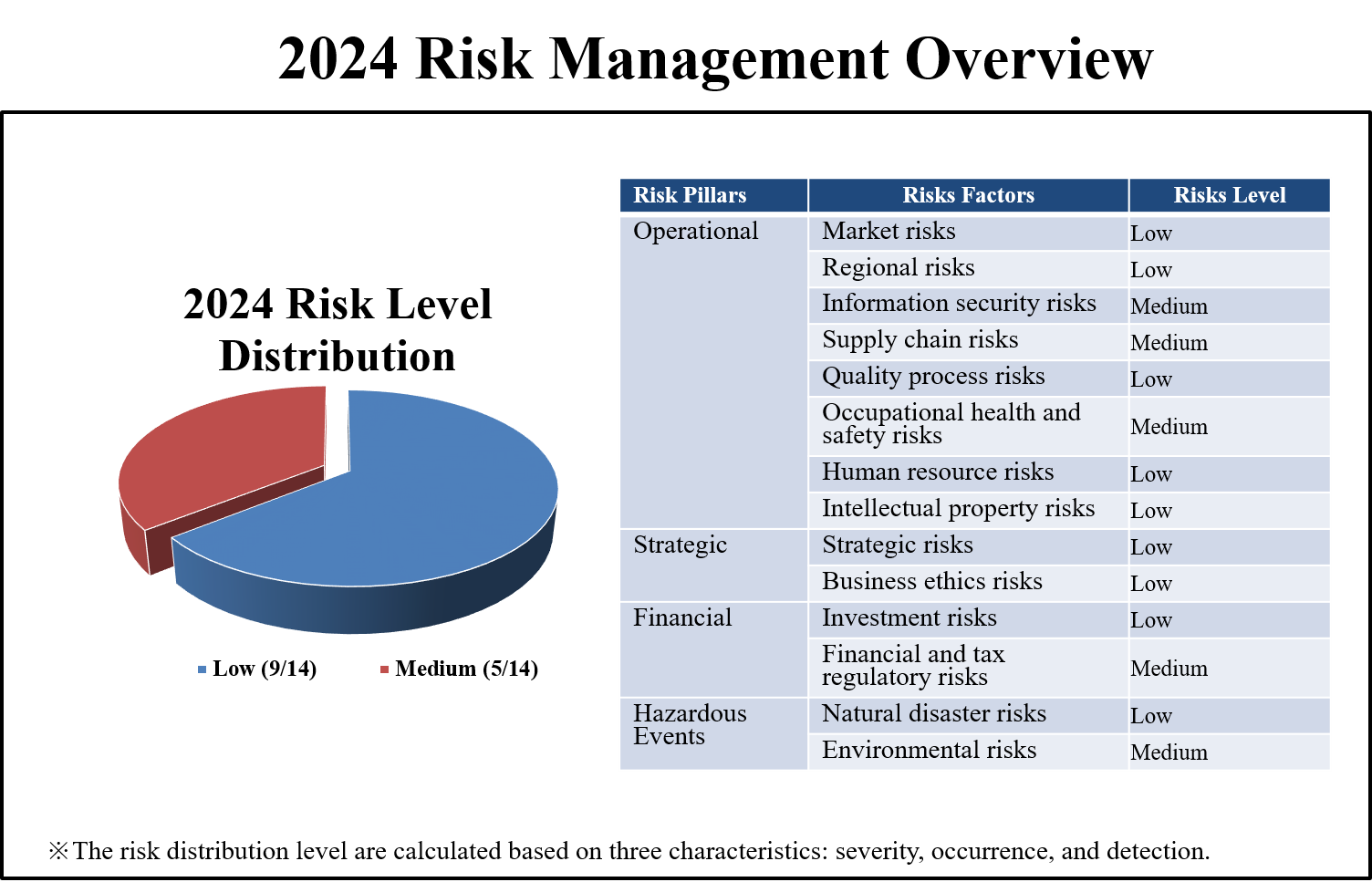Risk Management Policy
In order to enhance oversight, the Board of Directors resolved at its meeting on December 26, 2024, to merge the Audit Committee and the Risk Management Committee into a single entity known as the “Audit and Risk Committee”, which will assist the Board in promoting effective risk management and corporate governance. Additionally, it will report the implementation status to the Board at least once annually to ensure that the company's operations remain stable and aligned with the goal of sustainable development.
Through the analysis of both internal and external environments, the risk management policy delineates four primary facets of risk management: operational, strategic, financial, and hazard pillars. To assess the risk level associated with each pillar, a total of 14 risk factors have been identified, and the processes of identification, assessment, control, and supervision are thoroughly documented. Additionally, the PDCA cycle (Plan, Do, Check, Act) is employed for daily measurement to evaluate the status of each aspect.
With the goal of achieving corporate sustainable development, we examine the potential emerging risk issues that may impact and challenge the Group's operations. We continue to focus on the risks associated with the “Changes in the international political and economic downturn”and“Misinformation and disinformation”. According to the Global Risks Report released by the World Economic Forum on January 15, 2025, the threat posed by conflicts in the international political and economic landscape to corporate sustainable development constitutes the majority of the top 10 emerging risks identified over the past two years. These risks include international armed conflicts, social polarization, inequality, and involuntary migration. Additionally, misinformation and disinformation have emerged as significant risks during this period. This phenomenon is defined as the persistent presence of false information—whether intentional or unintentional—widely disseminated through media networks. Such misinformation significantly alters public opinion and fosters distrust in facts and authority, encompassing issues such as falsification, impersonation, and manipulation (WEF, 2025, pp. 98).
According to the Risk Management Policy, we review the company's risk exposure twice a year. Implementation results are regularly reported to the Board of Directors and the Audit and Risk Committee. Improvement plans are disclosed and updated for the Sustainability Executive Committee as part of ongoing risk oversight and mitigation efforts.






